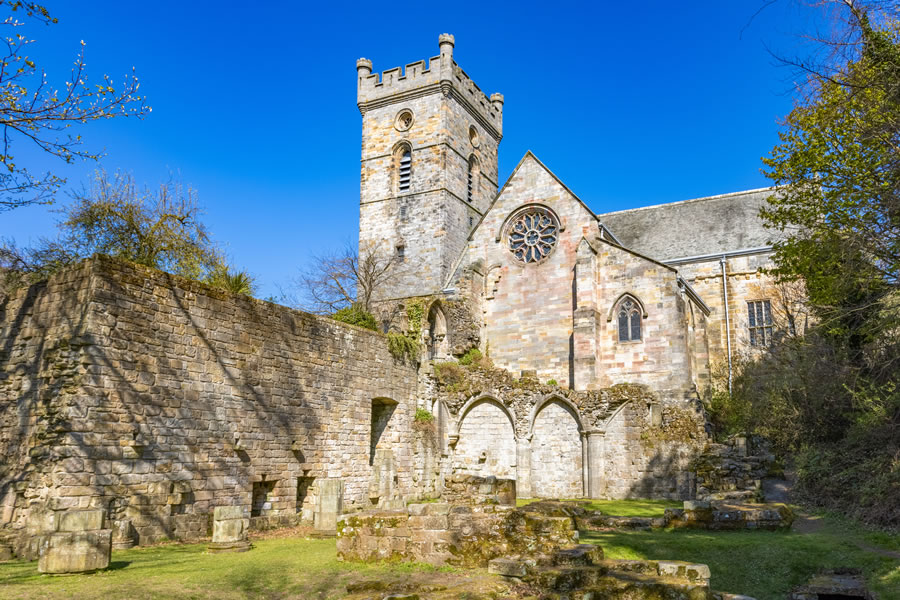Pilgrim Ways and a Vibrant Sacred History
West Fife’s Christian history

The pilgrim route
Following her death in 1093, Queen Margaret was also viewed as a saint, and pilgrims from across the British Isles began to visit her tomb in Dunfermline, where the superb Benedictine Abbey was constructed around her shrine and the tombs of the Canmore monarchs in the twelfth century. Margaret was formally canonised in 1249-50 by Pope Innocent IV, following a campaign supported by her descendants in both the Scottish and English royal dynasties.
Margaret has been credited with reforming the Scottish church and bringing it into line with Western European practices, although the extent of her role in this process is debated by historians. One undisputed action taken by the queen was the establishment of a ferry across the Forth for pilgrims travelling to the shrine of St Andrew in Eastern Fife. This pilgrim route, which soon also included Margaret’s tomb, was supported by a network of chapels, hospitals and hostels found across West Fife, most notably the chapel of St James in North Queensferry, and the Hospitium in Inverkeithing, a guest house attached to the Franciscan Friary founded in the late fourteenth century.
West Fife’s sacred landscape
As well as the abbeys, priories and friaries at Dunfermline, Culross, Loch Leven and Inverkeithing, the remains of number of fine parish churches constructed in West Fife in the later Middle Ages can still be seen in Kincardine, Culross and Inverkeithing. In the eighteenth and nineteenth century, the sacred landscape of the region was augmented with several new churches belonging to different denominations, including the church in Saline (c.1810) and New Abbey Church in Dunfermline (1821).
Further Reading
- Tom Turpie, Fife Pilgrim Way. Report Detailing References to Pilgrimage and The Cult of The Saints in Fife (2016) https://fifecoastandcountrysidetrust.co.uk/plan-your-trip/resources/fife-pilgrim-way/
- Donald Omand, (ed) The Fife book (Edinburgh: Birlinn), chapters 10&11
5 ways to improve your wellbeing through heritage
Take Notice at Dunfermline Abbey
The Dunfermline Abbey Church and Nave provide an ideal place for reflection and contemplation. For more information on visiting and opening hours.
Be Active on the Fife Pilgrim Way
There are two starting points for the Fife Pilgrim Way walking route one starts in Culross and the other North Queensferry, both finish in Dunfermline. There’s lots of information to plan your walk here.

Connect with the Fife Pilgrim Pastor
The Fife Pilgrim Way seeks to follow the old medieval pilgrim route and runs some 64 miles across Fife, from N. Queensferry or Culross to St Andrews. Duncan Weaver is the Fife Pilgrim Pastor and he will be leading walks on all the sections of the route throughout 2023. To find out more visit his Facebook page
Keep Learning at Dunfermline Carnegie Library & Galleries
The main lending library and reading room at Dunfermline Carnegie Library & Galleries hold a huge variety of books, maps and archives connected with the history of Dunfermline and West Fife. You may be interested to read more about the Fife Pilgrim Way and there is an excellent book available by Ian Bradley.
Give your time to conserve sacred landscapes
Join Fife Coast and Countryside’s Conservation Team to help manage local nature reserves, coastal and inland walking routes.
The emphasis is for everyone to enjoy their time, in a safe environment, with an opportunity to learn new skills, whilst carrying out tasks that will directly enhance the sites and improve habitats. More information on opportunities and ways to get involved.
